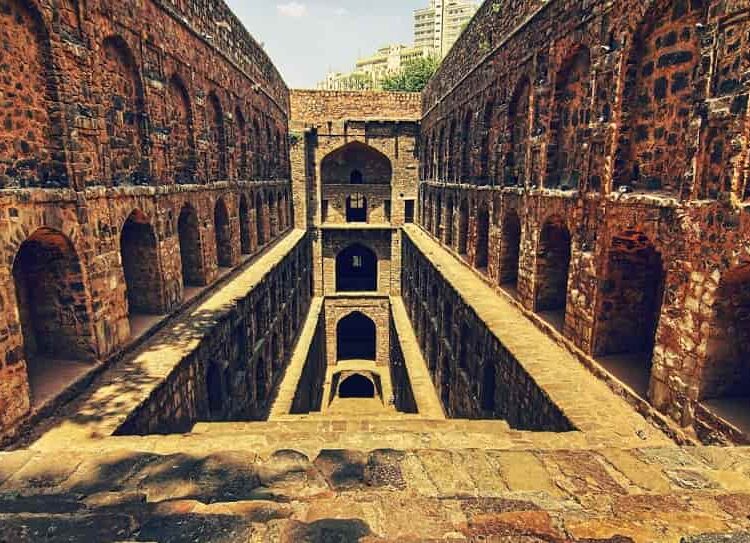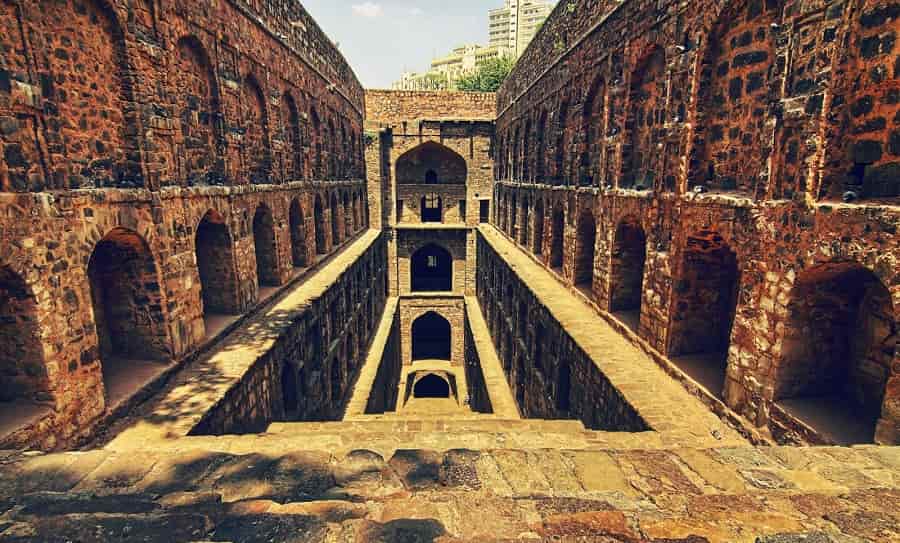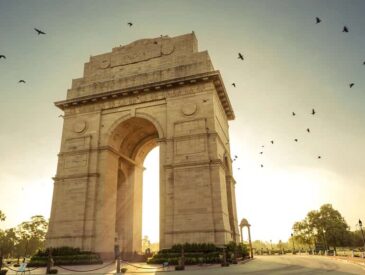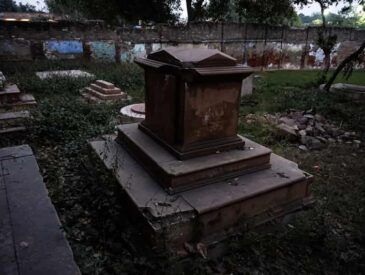Nestled in the bustling heart of New Delhi, Agrasen Ki Baoli, also known as Ugrasen Ki Baoli, stands as a remarkable testament to the city’s rich historical tapestry. This ancient stepwell, a splendid example of medieval architecture and engineering, has captured the imagination of locals and tourists alike. It serves as a refreshing oasis in the urban landscape, inviting visitors to explore its serene beauty, rich history, and architectural marvels.
Overview of Agrasen Ki Baoli
- Location: Hailey Road, New Delhi
- Type: Stepwell
- Alternate Name: Ugrasen Ki Baoli
- Timings: 7:00 AM to 6:00 PM (Open Daily)
- Entry Fee: Free
- Photography Policy: Free for still and video cameras
- Nearest Metro Stations: Janpath (Violet Line), Barakhamba (Blue Line), Rajiv Chowk (Blue and Yellow Lines)
- Architectural Style: Hindu
- Commissioned By: Maharaja Agrasen
- Construction Period: Originally built during the reign of Maharaja Agrasen; rebuilt in the 14th century
- Dimensions: 60 meters in length and 15 meters in width
- Materials Used: Various rocks and stones
- Status: Protected monument under the Archaeological Survey of India (ASI)
- Best Time to Visit: Morning hours for a cooler experience and optimal photography conditions
Historical Background
The Legend of Maharaja Agrasen
The history of Agrasen Ki Baoli is steeped in legend. Maharaja Agrasen, an illustrious king of Agroha, is said to have commissioned the construction of this stepwell. Historical accounts suggest that he built it to serve the water needs of the Agrawal community, a merchant community descended from him. His rule is often associated with the promotion of trade and commerce, and the stepwell likely played a crucial role in supporting the local populace.
While the original construction date is shrouded in mystery, many historians believe that the stepwell was constructed during the Mahabharata era, which adds an additional layer of intrigue to its history. However, the existing structure primarily dates back to the 14th century when it was reconstructed during the reign of the Tughlaq or Lodhi dynasties. The architectural style and features of Agrasen Ki Baoli provide insight into the aesthetics and engineering skills of that period.
The Community and Cultural Significance
Agrasen Ki Baoli was not merely a water reservoir; it served as a community gathering place. In ancient times, it provided respite from the scorching heat of Delhi’s summers. Women and families would often come here to relax and socialize, highlighting its role as a social hub. The baoli’s cool, shaded ambiance made it a perfect retreat where people could come together, share stories, and partake in religious ceremonies.
Architectural Features of Agrasen Ki Baoli
Design and Structure
Agrasen Ki Baoli is distinguished by its unique rectangular shape, which sets it apart from other stepwells that are typically round. The structure extends 60 meters in length and 15 meters in width, comprising three distinct levels. Each level is adorned with a series of symmetrical arched niches that create a striking visual effect. These niches not only enhance the aesthetic appeal of the baoli but also provide structural support.
The entrance to the stepwell features a grand staircase with more than 100 steps that descend towards the water level. As visitors descend the staircase, they experience a noticeable drop in temperature, a testament to the clever engineering used in its construction. The steps are wide and comfortably spaced, allowing for easy access and exploration.
The Water Well
At the northern end of Agrasen Ki Baoli lies a circular well, measuring approximately 8 meters in diameter. This well remains dry for most of the year but fills with water during the monsoon season. The water level can rise to around 4 or 5 feet, providing a vital water source for the surrounding community during times of need. An iron grill surrounds the well for safety, preventing accidental falls and ensuring that visitors can admire its beauty without risk.
Arched Niches and Alcoves
The arched niches that line the walls of Agrasen Ki Baoli are one of its most enchanting features. These semi-circular alcoves are meticulously crafted and adorned with intricate designs, showcasing the artistry of the craftsmen of that era. The interplay of light and shadow within these niches creates a magical ambiance, making the baoli a favorite spot for photographers.
The Mosque
A small mosque is situated at the southwest corner of the Agrasen Ki Baoli complex. Visitors can access it through a triple-arched entrance supported by four elegantly designed sandstone pillars. Unfortunately, one of these pillars has collapsed, but the remaining ones are adorned with intricate carvings, adding to the aesthetic beauty of the site.
Mystique and Paranormal Legends
Agrasen Ki Baoli has garnered a reputation as one of the haunted places in Delhi. Legends abound regarding the mysterious properties of its waters. It is said that the water in the baoli was once dark and enticing, luring individuals to leap in and end their lives. Some visitors report feeling an inexplicable urge to descend further into the depths of the stepwell, leading to whispers of supernatural forces at play.
While these stories add an intriguing element to the baoli’s history, it’s essential to approach them with a sense of skepticism. Many believe that the allure of the baoli stems from its haunting beauty rather than any paranormal activity. Regardless, the legends surrounding Agrasen Ki Baoli enhance its appeal as a tourist destination, drawing curious visitors eager to experience its enigmatic atmosphere.
Current Status of Agrasen Ki Baoli
Preservation Efforts
In recent years, Agrasen Ki Baoli has received significant attention as a heritage site. Recognized as a protected monument under the Archaeological Survey of India, efforts have been made to preserve its architectural integrity and cultural significance. The ASI oversees maintenance and conservation, ensuring that this historical landmark remains accessible to the public.
A Popular Tourist Destination
Agrasen Ki Baoli has become a popular attraction for both domestic and international tourists. Its unique architecture, historical significance, and intriguing legends draw thousands of visitors each year. The baoli has also gained recognition in popular culture, appearing in several Bollywood films, which has further enhanced its visibility.
The site’s central location makes it easily accessible, attracting not only history buffs but also photography enthusiasts. Its stunning architecture and serene atmosphere provide an ideal backdrop for capturing memorable moments.
Exploring Agrasen Ki Baoli
Things to Do at Agrasen Ki Baoli
- Architectural Exploration:
- Take your time to wander through the intricate architectural details of Agrasen Ki Baoli. Marvel at the symmetrical steps, arched niches, and stunning stonework that define this historical monument.
- Photography Opportunities:
- Agrasen Ki Baoli is a photographer’s paradise. The interplay of light and shadows creates a unique ambiance, offering a myriad of opportunities to capture breathtaking images. Whether you’re an amateur or a professional photographer, you’ll find countless angles to showcase the beauty of this stepwell.
- Relaxation and Meditation:
- The tranquil surroundings of Agrasen Ki Baoli provide an excellent environment for relaxation and meditation. Visitors can find a quiet corner to reflect, meditate, or simply enjoy the serenity of the place, away from the hustle and bustle of city life.
- Historical Insights:
- Engage with local guides or fellow visitors to learn more about the history and significance of Agrasen Ki Baoli. Listening to stories about its construction, legends, and community use enriches the overall experience.
- Picnicking:
- Though there are no formal picnic areas, the surrounding space offers spots where visitors can sit and enjoy a light snack or meal. Bringing along some refreshments can enhance your visit as you soak in the historical ambiance.
Nearby Attractions
Once you’ve explored Agrasen Ki Baoli, consider venturing out to nearby attractions to make the most of your visit to the area:
- Jantar Mantar (1.4 km): An astronomical observatory built in the 18th century, featuring large instruments for observing celestial bodies.
- Janpath Market (1.5 km): A bustling shopping area where you can find handicrafts, souvenirs, and local street food.
- Bangla Sahib Gurudwara (1.7 km): A prominent Sikh temple known for its stunning architecture and peaceful ambiance, offering free meals to all visitors.
- National Museum (2.0 km): A comprehensive museum showcasing India’s rich heritage, including artifacts from various historical periods.
- Connaught Place (2.5 km): A major commercial and financial center, known for its colonial architecture, shops, and eateries.
- Birla Temple (3.6 km): A beautiful temple dedicated to Lord Vishnu and Goddess Lakshmi, renowned for its intricate marble work.
- Parliament House (2.7 km): The seat of the Parliament of India, an architectural marvel worth admiring from the outside.
- Rashtrapati Bhavan (3.1 km): The official residence of the President of India, showcasing magnificent gardens and impressive architecture.
- Khooni Darwaza (3.5 km): A historical gate with a dark past, reputedly haunted, and a site of many historical events.
- Delhi Zoo (3.8 km): Home to a variety of animals and birds, perfect for a family outing.
- Humayun’s Tomb (5.5 km): A UNESCO World Heritage Site and the tomb of Mughal Emperor Humayun, noted for its stunning gardens and architecture.
Dining Options Near Agrasen Ki Baoli
After your exploration, you might want to enjoy a meal at one of the nearby restaurants. Here are a few recommendations:
- Spice Route (1 km): An upscale restaurant offering a variety of Southeast Asian cuisines in a beautifully designed ambiance.
- Indian Coffee House, Connaught Place (1.5 km): A vintage coffee house known for its classic Indian snacks and coffee, a popular spot for students and professionals alike.
- Tamasha (1.5 km): A trendy restaurant and bar featuring an eclectic menu and vibrant decor, perfect for a lively dining experience.
- Parikrama – The Revolving Restaurant (1.6 km): Enjoy panoramic views of the city while savoring a delicious meal at this unique revolving restaurant.
Visitor Tips for Agrasen Ki Baoli
- Timing Your Visit: Early mornings or late afternoons are ideal for visiting Agrasen Ki Baoli to avoid the midday heat. This timing also offers excellent lighting for photography.
- Dress Comfortably: Wear comfortable shoes, as you will be walking up and down the steps. Light, breathable clothing is also advisable given Delhi’s climate.
- Stay Hydrated: Carry a water bottle to stay hydrated, especially during the warmer months.
- Respect the Site: Being a historical monument, it is crucial to respect the space and maintain cleanliness. Avoid littering and follow any guidelines set by the Archaeological Survey of India.
- Engage with Locals: If you have the opportunity, interact with local guides or visitors to gain deeper insights into the history and legends of Agrasen Ki Baoli.
Conclusion
Agrasen Ki Baoli is more than just a stepwell; it is a portal into Delhi’s past, an architectural marvel, and a serene escape from the urban chaos. Its rich history, beautiful architecture, and mystical allure create a captivating experience for all who visit. As you explore its depths, you are not just walking through a historical site; you are stepping into the stories of those who came before, each stone whispering tales of community, culture, and time.
Whether you are a history enthusiast, a photography lover, or simply looking for a tranquil spot to unwind, Agrasen Ki Baoli promises an unforgettable experience. Make sure to include it in your itinerary when visiting Delhi, and immerse yourself in the beauty and mystery of this remarkable stepwell.






